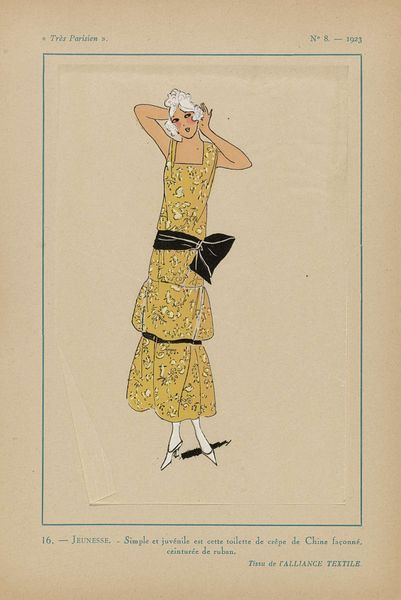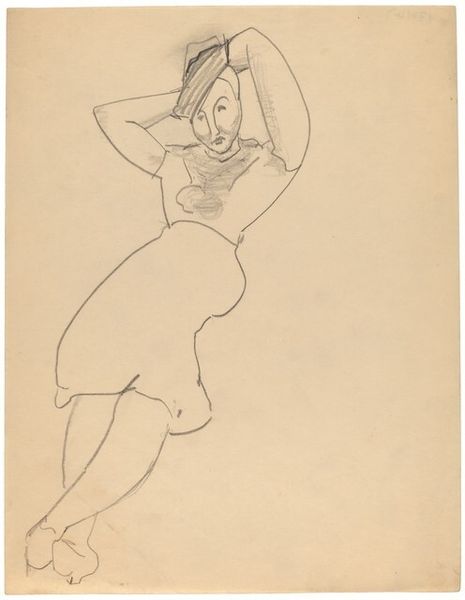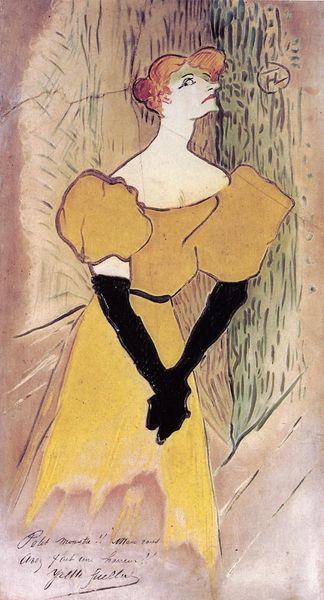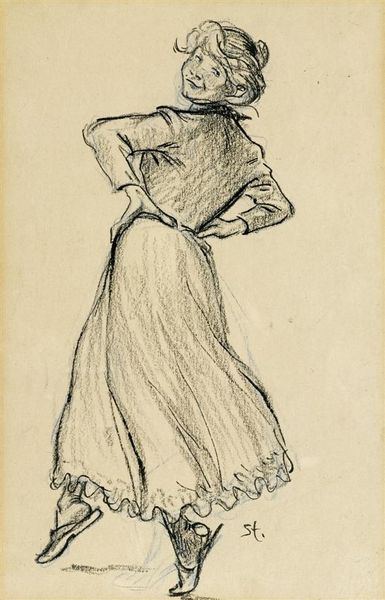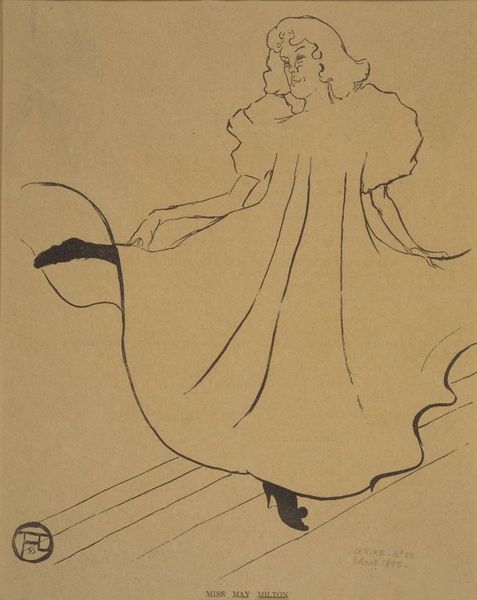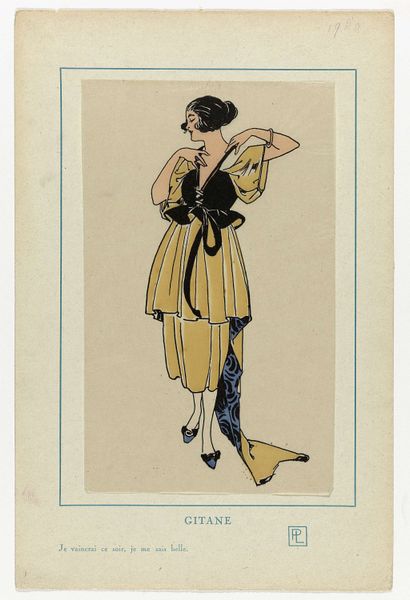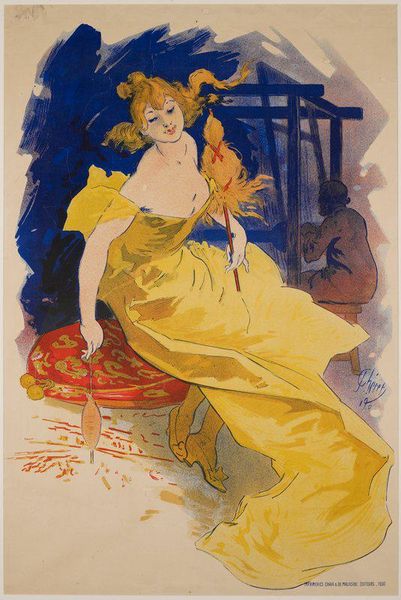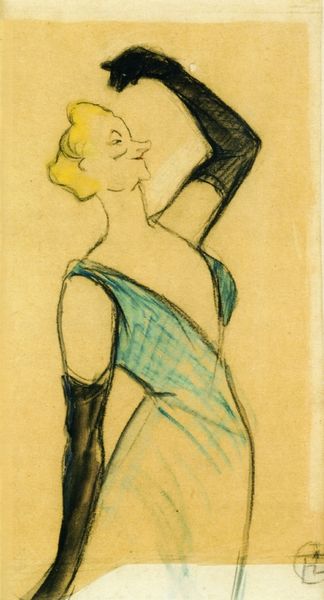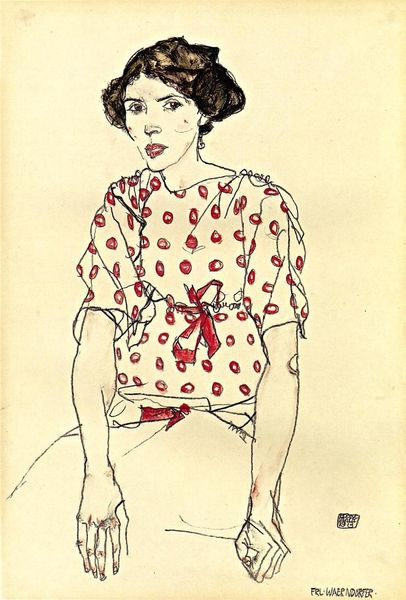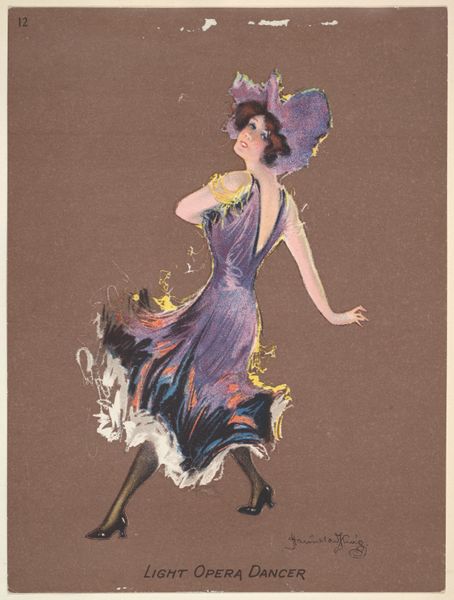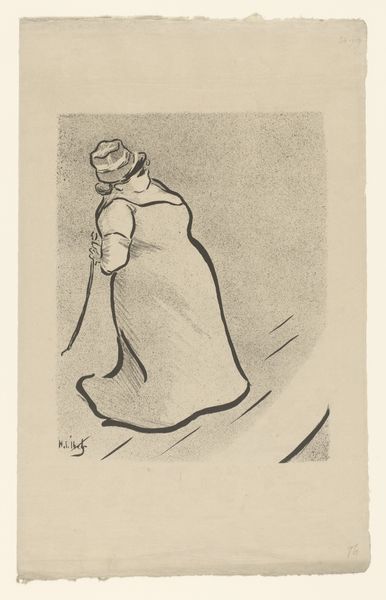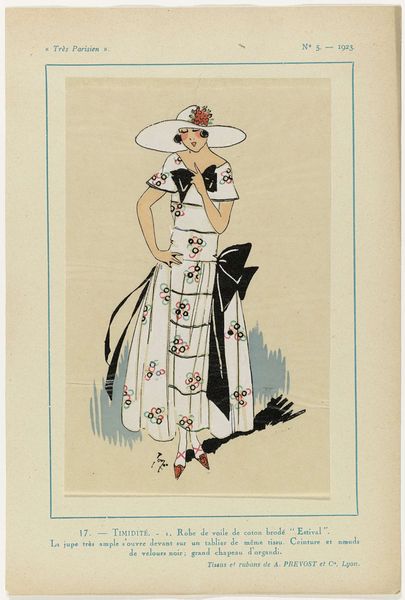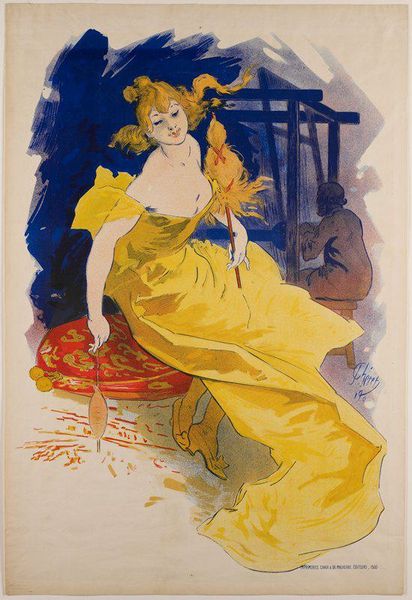
graphic-art, lithograph, print
#
portrait
#
graphic-art
#
art-nouveau
#
lithograph
# print
Copyright: Public domain
Curator: Let’s take a look at Henri de Toulouse-Lautrec's 1895 lithograph, titled "Polaire." Currently it resides at the Brooklyn Museum. Editor: What strikes me first is the almost theatrical stylization. It’s as though the figure is captured mid-performance, the vibrant yellow dress and exaggerated gestures creating an almost cartoonish effect. Curator: That’s interesting because Polaire, the stage name of Émilie Marie Bouchaud, was indeed a celebrated performer in the cabarets of Montmartre. Toulouse-Lautrec was drawn to the energy of those spaces. What we see in "Polaire" is the commodification of artistic identity, posters meant for the streets but desired by collectors. Editor: Focusing on form, there is such boldness in the line. Toulouse-Lautrec manages to distill the essence of the figure down to these swift strokes and bold blocks of color, largely black and that striking yellow. Semiotically, yellow signifies humor but, due to the dark linework, also disease, prejudice and decay, perhaps showing the darkness in the light of cabaret entertainment? Curator: And if you delve into the context, you discover Polaire was celebrated but also exoticized, her appearance and performances often framed through a colonial gaze, playing into orientalist stereotypes then current in the music hall and theater scenes. What seems at first a joyous print, also touches the less joyful aspects of 19th century France. Editor: It certainly underscores how visual culture reinforces these power structures and social ideas, which echoes the political charge of a piece initially produced for the very public domain of Parisian streets. What's incredible is how he captures not just her likeness but something of her public persona, both inviting and confrontational. Curator: Absolutely, it shows that something apparently decorative and commercially motivated such as an Art Nouveau print is an active player within socio-political forces. What it renders visible goes far beyond Polaire’s physical representation, showing how artists reflect and reframe larger discourses. Editor: Examining the lithograph from these intertwined perspectives reveals a tension between the surface aesthetics and a rather potent commentary that might not immediately meet the eye, and one is left to consider their relationship within society.
Comments
No comments
Be the first to comment and join the conversation on the ultimate creative platform.
